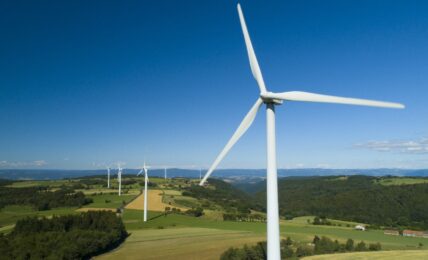A vast majority of European banks face significant climate transition risk, according to a new study released by the European Central Bank (ECB), with a “staggering 90%” found to have loan books misaligned with global climate goals and the EU’s 2050 climate neutrality target.
For the new study, the ECB quantified the transition risks in the credit portfolios of 95 banks, covering 75% of euro area loans, using an ‘alignment assessment’ methodology, which measures the difference between the production projections and decarbonization pathway targets of companies in the banks’ portfolios. The study looked at companies in six key carbon intensive sectors with the most pronounced transition risk – including Power, Automotive, Oil & gas, Steel, Coal and Cement – which collectively account for 70% of global CO2 emissions.
The study indicated that of the 95 banks assessed, only 8 had lending aligned with a 2050 net zero pathway, leaving “a striking 90% are found to be misaligned, increasing their transition risk,” with key underlying factors contributing to elevated risk primarily stemming from financing companies that were too slow to phase out high-carbon production capacities, and lagging on the build-out of renewable energy production.
Among the risks highlighted by the report, reputational and litigation risk were the most common, affecting around 70% of banks. The report noted that while 72 of the 95 banks have made a commitment to reach net zero, 93% of these are not yet aligned with a pathway to achieve this goal, with strategies and internal processes that “do not currently ensure that they can fulfil their external commitments.”
In a blog post accompanying the release of the report, Frank Elderson, Member of the Executive Board of the ECB and Vice-Chair of the Supervisory Board of the ECB, noted the particular exposure of these banks to litigation risk, given the sharp growth in climate lawsuits. Elderson said:
“This is more relevant than ever, considering that climate litigation has skyrocketed in recent years. Globally, some 560 new cases have been filed since 2021 and increasingly also targeted at corporates and banks.”
While credit risks were less pronounced, with 60 of the banks exhibiting misalignment exposures lower than €1 billion, several of the banks (14%) had larger exposures greater than €5 billion, including 6 banks at more than €10 billion. Moreover, the study found that misalignment could rapidly increase, with exposure to misaligned counterparties poised to grow by more than 50% of credit lines to these companies were to be fully utilized. Additionally, the relatively high exposure of some of the most misaligned banks in the study compared to their Common Equity Tier 1 (CET1) capital indicated potential impact on solvency at these banks from climate transition risks.
A key source of transition risk for banks uncovered by the report was the tendency for banks to provide larger loans to misaligned companies, leading to significant exposure, with the average size of exposure to misaligned companies at more than double that of aligned companies.
Degree of misalignment by sector varied significantly, with banks most misaligned to sectors with earlier transition pathways, and showing smaller misalignments with sectors that currently lack viable zero-emission alternatives, such as steel and cement, which have longer to move towards decarbonization, following the IEA’s 2050 net zero emission (NZE) scenario. Financing portfolios for the automotive sector, for example, showed a much higher degree of misalignment, with many companies financed by the banks lagging on the shift to electric vehicle production, even as the scenario envisions the phase out of fossil fuel cars by 2050. Overall, however, almost all banks were misaligned across all sectors, except for steel.
The report also assessed the impact of technologies on the alignment of banks’ portfolios to the climate transition, finding that a significant portion of the banks’ misalignment stemmed from companies that were slow to phase out their production of carbon intensive technologies, most notably those lagging on the phase-out of coal, oil and gas mining and extraction, and automotive companies behind on phasing out internal combustion engines. Additionally, over 30% of the misalignment resulted from a lack of financing for renewable energy sources, particularly in the power sector.
Elderson said:
“The economy needs stable banks particularly as it goes through the green transition. It is in turn crucial for banks to identify and measure the risks arising from the transition towards a decarbonised economy.”
Click here to access the report.


